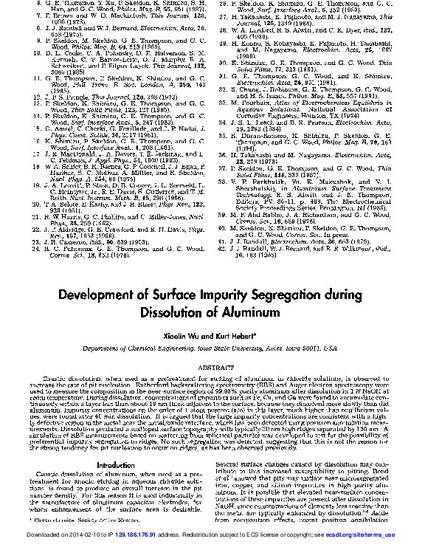
Caustic dissolution, when used as a pretreatment for etching of aluminum in chloride solutions, is observed to increase the rate of pit nucleation. Rutherford backscattering spectrometry (RBS) and Auger electron spectroscopy were used to measure the composition in the near‐surface region of 99.98% purity aluminum after dissolution in 1 N NaOH at room temperature. During dissolution, concentrations of impurities such as Fe, Cu, and Ga were found to accumulate continuously within a layer less than about 10 nm thick adjacent to the surface, because they dissolved more slowly than did aluminum. Impurity concentrations on the order of 1 atom percent (a/o) in this layer, much higher than equilbrium values, were found after 40 min dissolution. It is argued that the large impurity concentrations are consistent with a highly defective region in the metal near the metal/oxide interface, which has been detected using positron annihilation measurements. Dissolution produced a scalloped surface topography with typically 30 nm high ridges separated by 130 nm. A simulation of RBS measurements based on scattering from spherical particles was developed to test for the possibility of preferential impurity segregation to ridges. No such segregation was detected, suggesting that this is not the reason for the strong tendency for pit nucleation to occur on ridges, as has been observed previously.
Available at: http://works.bepress.com/kurtr_hebert/9/

This article is from Journal of the Electrochemical Society 143 (1996): 83–91, doi:10.1149/1.1836390. Posted with permission.